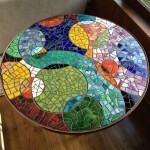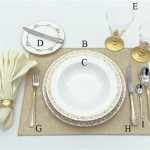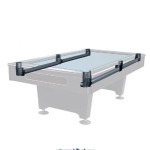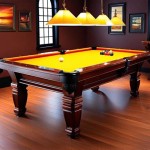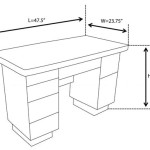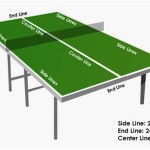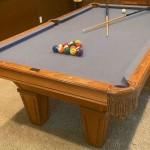What Is A Small Dining Table Called?
Small dining tables exist under a variety of names, often depending on their specific dimensions, shape, and intended purpose. The lack of a single, universally accepted term can make searching for the right table a somewhat confusing experience. This article aims to clarify the terminology used for small dining tables, exploring common names and differentiating factors to assist in the selection process.
Understanding the nuances in naming conventions is crucial. A table that is small enough to fit comfortably in a breakfast nook might be labeled very differently from one designed for a studio apartment. Similarly, a table with a specific shape – round, square, or rectangular – will often have a specific descriptor that contributes to its overall designation. Identifying the common terms and the characteristics typically associated with them is essential for efficient furniture shopping.
Common Terms for Small Dining Tables
Several terms are frequently used to describe dining tables designed for smaller spaces. Each term carries implicit connotations about the table's size, shape, and intended use. Understanding these is the first step towards accurately identifying the correct piece of furniture.
Breakfast Table: This term typically refers to a small table intended for casual dining, seating typically two to four people. Breakfast tables are often found in or near the kitchen and are designed for quick meals and informal gatherings. They might be round, square, or rectangular, but generally have a smaller footprint than a standard dining table. The materials used can range from wood to metal, often incorporating durable surfaces that resist spills and stains due to the likelihood of frequent use.
Bistro Table: Originating from French cafes, bistro tables are typically small and round, designed for two people. They often feature a pedestal base and a relatively small tabletop diameter. The materials used can vary, ranging from cast iron and wood to more modern materials like steel and composite materials. Their compact size makes them ideal for small apartments, balconies, or nooks. The term "bistro table" often implies a certain aesthetic, evoking a sense of Parisian charm and classic elegance.
Cafe Table: Similar to bistro tables, cafe tables are often used in restaurants and cafes. They can be round, square, or even rectangular, but they are generally smaller than standard dining tables. The term "cafe table" emphasizes the functionality and durability of the table, as it's designed for high-traffic environments. Construction materials are typically robust and easy to clean, prioritizing practicality over elaborate design elements. However, their aesthetic can range depending on the style of the café, with some leaning towards industrial chic while others favor a more traditional or vintage look.
Kitchen Table: This is a rather broad term referring to any table placed within a kitchen. A kitchen table might vary greatly in size depending on the available space and intended use. In smaller kitchens, a "kitchen table" may be a small, space-saving design meant for a couple of individuals. In larger kitchens, the table may be significantly bigger to accommodate a whole family. The key characteristic is its location within the kitchen environment. Materials used are often chosen for their durability and resistance to moisture and food stains.
Apartment Table: This term specifically highlights the suitability of the table for apartment living, implying a space-saving design. These tables are often smaller in size and may even incorporate features like drop-leaf extensions or folding mechanisms to further optimize available space. Apartment tables prioritize functionality and adaptability, catering to the limitations of smaller living quarters. The designs can vary widely, ranging from minimalist and modern to more traditional styles.
Nook Table: A nook table is specifically designed to fit within a designated nook or alcove, often a breakfast nook. These tables are usually smaller and may be round, square, or even custom-shaped to perfectly fit the available space. The primary consideration for a nook table is its ability to maximize seating capacity without overwhelming the nook itself. The material selections often complement the overall aesthetic of the nook and the surrounding kitchen area.
Factors Influencing the Terminology
Several factors significantly influence the specific term used to describe a small dining table. These include the table's dimensions, shape, the number of people it can comfortably seat, and its overall style.
Dimensions: The physical size of the table is a primary determinant. A table with a small surface area and compact dimensions is more likely to be designated a bistro table or cafe table, suggesting its suitability for smaller spaces and intimate gatherings. Conversely, a slightly larger table, still relatively small but capable of accommodating more dishes and diners, might be referred to as a breakfast table or kitchen table. The specific cut-off between these terms is subjective, but dimension is a key factor in the differentiation.
Shape: The shape of the tabletop also plays a role. Round tables promote conversation and create a sense of intimacy, making them popular choices for bistro and cafe settings. Square tables offer a clean, modern look and can be easily pushed against a wall to save space. Rectangular tables, even in smaller sizes, provide a more formal dining experience and can accommodate more people along their longer sides. The shape often dictates the table's perceived functionality and aesthetic.
Seating Capacity: The number of people a table can comfortably seat is another crucial consideration. A table designed for two people is highly likely to be called a bistro table, while a table that can accommodate four might be referred to as a breakfast table or kitchen table. The intended seating capacity directly influences the corresponding terminology, reflecting the table's primary purpose and intended use.
Style and Design: The overall style and design of the table also contributes to its labeling. A table with a classic, Parisian-inspired design is more likely to be called a bistro table, while a table with a more modern, minimalist design might be referred to as an apartment table. The aesthetic elements, including materials, finishes, and decorative details, all contribute to the overall impression and influence the choice of terminology.
Practical Considerations When Choosing a Small Dining Table
Beyond the terminology, several practical considerations are paramount when selecting a small dining table for a specific space. These include assessing the available space, determining seating requirements, and considering the overall style and décor of the room.
Space Assessment: Before purchasing any dining table, it's essential to accurately measure the available space. This includes considering not only the dimensions of the room or nook but also the surrounding furniture and any potential obstructions. A table that appears small in a showroom might feel significantly larger in a confined space. It's also important to consider the clearance needed around the table for comfortable seating and movement. Ideally, allow at least 36 inches between the edge of the table and any walls or other furniture.
Seating Requirements: Determine the typical number of people who will be using the table regularly. While a bistro table might be sufficient for a couple, a larger table will be necessary for families or those who frequently entertain guests. Consider whether you need a table that can be expanded or extended for occasional gatherings. Drop-leaf tables or tables with removable leaves offer a practical solution for maximizing space while still providing adequate seating when needed.
Style and Décor: Choose a table that complements the overall style and décor of the room. The table should seamlessly integrate into the existing aesthetic, enhancing rather than clashing with the surrounding furniture and accessories. Consider the materials, finishes, and design elements of the table and how they relate to the existing décor. A modern apartment might benefit from a sleek, minimalist table, while a more traditional kitchen might call for a classic wooden table with a rustic finish. The compatibility of style and décor will contribute significantly to the overall harmony and visual appeal of the space.
Material Durability: Consider the durability and maintenance requirements of the materials used in the table's construction. Tables made of solid wood are generally more durable and long-lasting, but they may require regular maintenance to protect the finish. Tables with laminate or composite surfaces are often more resistant to scratches and stains, making them a practical choice for kitchens and dining areas. Metal tables offer a sleek, modern look and are typically easy to clean and maintain. Select materials that are appropriate for the level of use and the specific environment.
By carefully considering these practical factors, individuals can navigate the various terminologies associated with small dining tables and select the perfect piece of furniture for their specific needs and space constraints.

Best Small Kitchen Dining Tables Chairs For Spaces Norbrig
:strip_icc()/101517272-c3b05d5f78f24ec8b3a9992775f28826.jpg?strip=all)
Built In Banquette Ideas

Standard Dining Table Dimensions The Size Guide

List Of Furniture Types Wikipedia

The Ultimate Guide To Kitchen Island Dining Tables Grain Frame

The Ultimate Guide To Kitchen Island Dining Tables Grain Frame

15 Best Breakfast Nook Ideas Kitchen Designs And Decor

Dining Room Layout Dimensions For Your Home Designcafe

The Ultimate Guide To Kitchen Island Dining Tables Grain Frame

Standard Dining Table Dimensions The Size Guide

